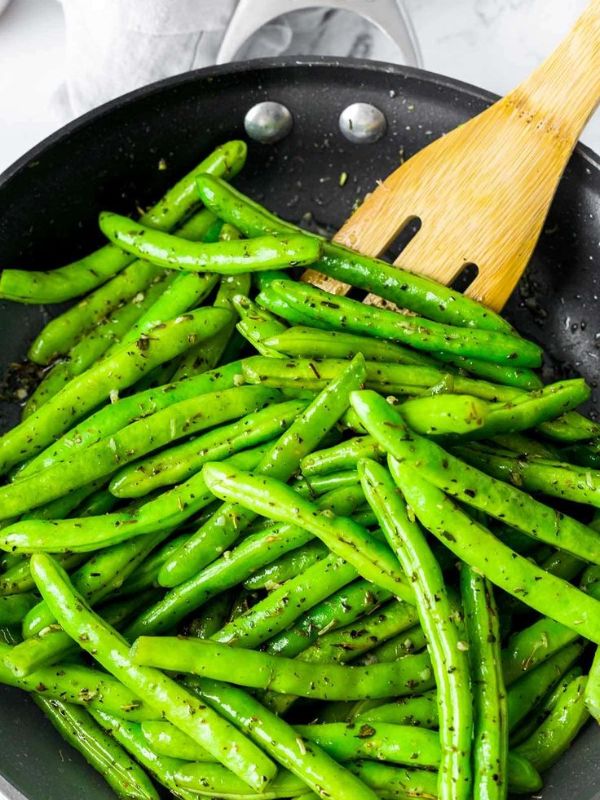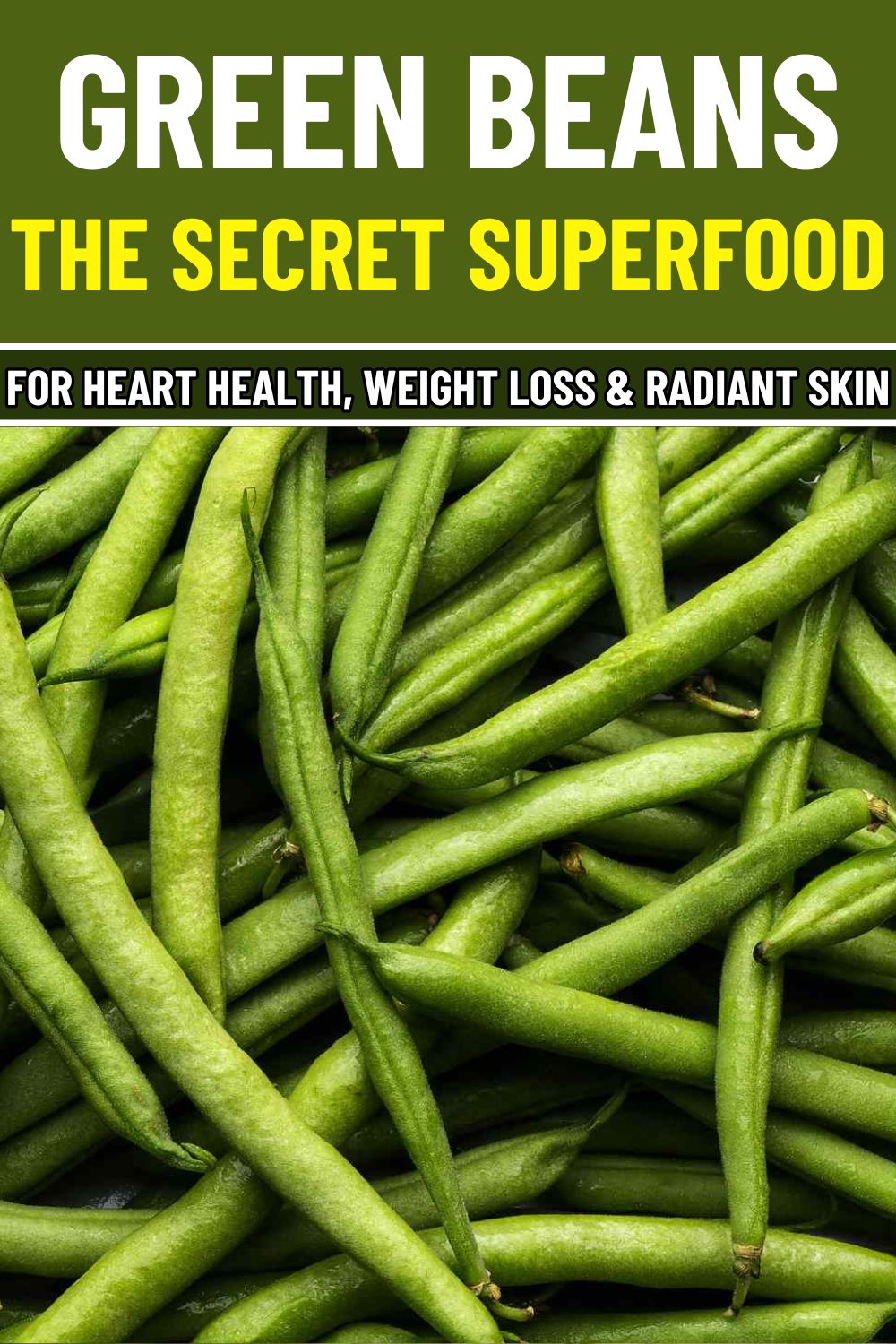Are you looking for a simple, delicious way to boost your health? Green beans, also known as string beans, may be your answer.
Packed with nutrients, antioxidants, and fiber, green beans are a versatile vegetable that can support heart health, enhance digestion, and even promote weight loss.
But that’s not all, this humble vegetable offers a variety of benefits that can improve your overall well-being. Curious to know how? Let’s dive in and explore why green beans should be a staple in your diet.
#1. Supports Heart Health
Green beans are low in cholesterol and saturated fats, making them ideal for heart health. They’re also a rich source of potassium, which helps regulate blood pressure, and magnesium, which promotes normal heart rhythms.
According to a study published in the American Journal of Clinical Nutrition, diets high in potassium significantly reduce the risk of heart disease. Regular consumption of green beans can help keep your heart strong and healthy.

#2. Promotes Digestive Health
Loaded with dietary fiber, green beans help support a healthy digestive system by promoting regular bowel movements and preventing constipation. One cup of green beans contains about 2.7 grams of fiber, making it a gut-friendly choice.
Over time, including fiber-rich foods like green beans in your diet can improve digestion and reduce the risk of conditions like irritable bowel syndrome (IBS).
#3. Aids Weight Management
If you’re aiming to shed a few pounds, green beans are a perfect addition to your meals. They are low in calories (just 31 calories per 100 grams) but high in water content and fiber, which keeps you feeling full for longer.
This makes them a great option for managing hunger and maintaining a healthy weight.

#4. Boosts Immune Function
Green beans are a powerhouse of vitamin C, with one cup providing about 27% of your daily recommended intake.
Vitamin C strengthens your immune system by enhancing the production of white blood cells and combating harmful free radicals.
Regular consumption of green beans can help you fight off common illnesses and stay healthier year-round.
#5. Enhances Bone Strength
Green beans are rich in vitamin K, a vital nutrient for maintaining strong bones and preventing fractures. One cup of green beans contains about 14% of your daily vitamin K requirement.
Additionally, they offer silicon, a mineral that helps strengthen bones and connective tissues, promoting better bone density over time.

#6. Protects Eye Health
Green beans contain carotenoids like lutein and zeaxanthin, which are essential for maintaining eye health. These compounds help reduce the risk of macular degeneration and cataracts, particularly as you age.
Adding green beans to your diet is an easy and natural way to keep your vision sharp.
#7. Reduces Inflammation
The antioxidants in green beans, such as flavonoids and beta-carotene, have anti-inflammatory properties.
This makes them beneficial for reducing symptoms of chronic inflammation, which can lead to arthritis and other inflammatory conditions.
Consuming green beans regularly can help manage these issues naturally.

How to Use Green Beans in Your Diet
1. Steamed or Stir-Fried
First, wash the green beans thoroughly to remove any dirt. Then, trim the ends with a knife or scissors. If steaming, place them in a steamer basket over boiling water and let them cook for 5–7 minutes until tender yet crisp.
You can drizzle them with olive oil and squeeze fresh lemon juice over them for a light, zesty side dish. Alternatively, you can stir-fry them.
Heat a pan with a tablespoon of sesame oil or olive oil, toss in some minced garlic, and sauté for 2 minutes. Next, add the green beans and stir-fry on medium heat for about 5 minutes, stirring occasionally until they turn a bright green.
For an Asian twist, add a splash of soy sauce and a pinch of sesame seeds.
2. Soups and Stews
To add green beans to your soups or stews, start by chopping them into bite-sized pieces. Then, prepare your soup base with your choice of broth and ingredients.
Once the soup begins to simmer, add the green beans during the last 10 minutes of cooking to ensure they remain tender but firm.
This step ensures they don’t overcook and lose their nutrients. Green beans add both texture and a subtle sweetness to hearty dishes like vegetable soup or beef stew.
3. Salads
For salads, you should blanch the green beans to retain their vibrant color and crisp texture. Begin by boiling a pot of water and adding the trimmed green beans.
Let them cook for 2–3 minutes, then immediately transfer them to an ice bath to stop the cooking process. Once cooled, drain them and pat them dry with a clean towel.
Next, toss them with fresh greens, cherry tomatoes, sliced almonds, and a balsamic vinaigrette. You can even add feta or goat cheese for an extra layer of flavor.
4. Casseroles
To create a green bean casserole, start by blanching the beans as described earlier. While they cool, prepare a creamy sauce using sautéed onions, mushrooms, garlic, and a splash of milk or cream thickened with a bit of flour.
Then, mix the green beans with the sauce in a baking dish and top it with crispy fried onions. Bake in a preheated oven at 375°F (190°C) for 20–25 minutes until bubbly and golden.
5. Snacks
If you’re looking for a healthy snack option, roasting green beans is a great choice. First, preheat your oven to 425°F (220°C).
Next, toss the trimmed green beans with a tablespoon of olive oil, a pinch of salt, freshly cracked black pepper, and a dash of paprika or garlic powder for flavor.
Spread them evenly on a baking sheet and roast for 15–20 minutes, flipping halfway through, until they’re crispy and slightly charred. Once roasted, they make a crunchy, nutrient-packed alternative to chips.

Cautions and Precautions
Green beans contain lectins, which can cause digestive discomfort if consumed in large amounts raw. Cooking them reduces lectin levels, making them safer to eat.
Though rare, some individuals may experience allergic reactions to green beans. If you notice any unusual symptoms after consuming them, consult your healthcare provider.
Green beans have moderate oxalate levels, which could contribute to kidney stone formation in individuals prone to the condition. If you have a history of kidney stones, consult your doctor before increasing your green bean intake.
Disclaimer
This article is intended for informational purposes only and is not a substitute for professional medical advice.
Always consult your healthcare provider before making significant changes to your diet or health routine.

Green Beans Unveiled: The Secret Superfood for Heart Health, Weight Loss, and Radiant Skin
